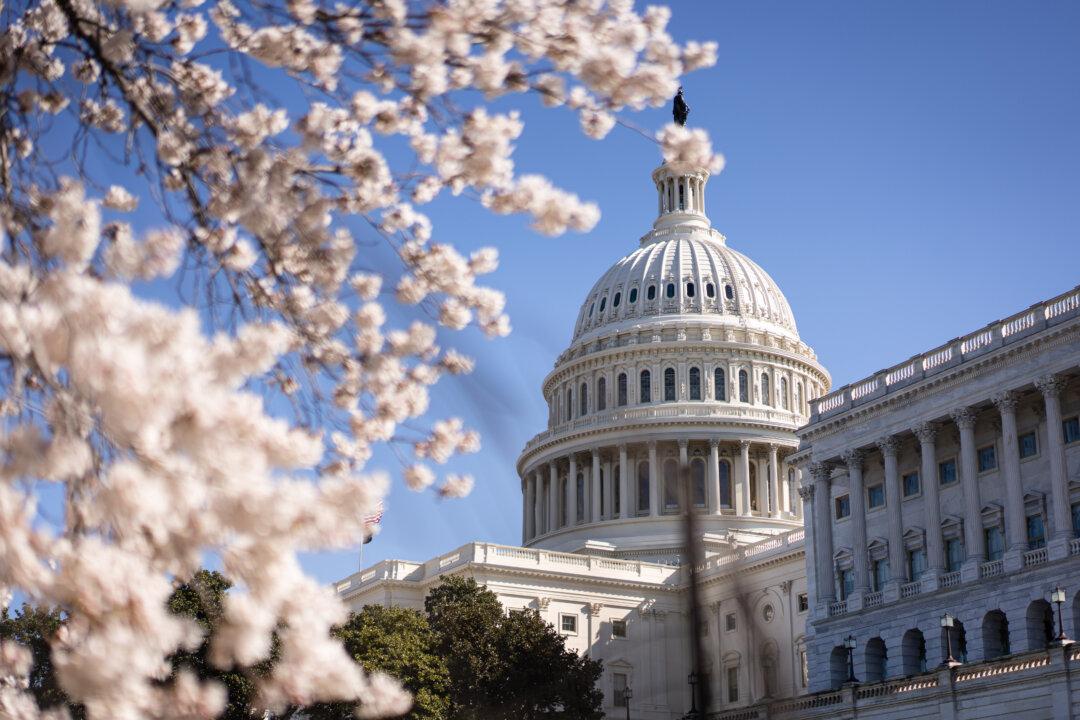A stunning and very popular pear tree is set to be banned in Kansas because they are growing 'so aggressively' that agricultural officials fear it will eventually damage natural ecosystems.
Callery pear trees - also known as Bradford pear trees - have long been a staple in landscapes across the state, known for their beautiful white flowers and large presence, but behind those wondrous blossoms lies a deeper story.
Although experts thought the trees were unable to reproduce, they have surely proven them wrong.
'These trees that were initially … independently sterile, have found a way to cross pollinate because of these cultivars that have been developed, including the Bradford pear,' Shad Hufnagel, Forest Health Coordinator for the Kansas Forest Service, told KSNW.
Hufnagel said the trees can particularly be hazardous to other parts of nature, including animals.
'Those trees have been able to cross-pollinate to create fertile seed, which in turn is consumed by wildlife birds, in particular, and then redeposited throughout our pastures, woodlands, and other native green spaces,' he explained.
The problem has become so dire that Michael M. Beam, the secretary with the Kansas Department of Agriculture (KDA), ordered a quarantine of all Callery pear trees.
By January 1, 2027, the trees, which are imported from Asia, will be prohibited from moving across the state and will also not be allowed to enter Kansas.
Callery pear trees - also known as Bradford pear trees - are set to be officially banned in Kansas because they are growing 'so aggressively'
The problem has become so dire that Michael M. Beam (pictured), the secretary with the Kansas Department of Agriculture (KDA), ordered a quarantine of all Callery pear trees
The order, which follows certain state laws, also carries the chance of criminal prosecution if it's defied.
Other than the trees ability to rapidly grow, they are also known to cross-pollinate, are prone to storm damage because of their weak wood, and they also carry an unpleasant smell.
The goal of the quarantine is to prevent any new trees from being planted, but does not require anyone from removing one that is already in the ground, a spokesperson with the KDA told KSHB.
Hufnagel said the tree has 'a more ominous nature to it' because of how fast they spread.
'They grow so aggressively that they will push out native vegetation and disrupt natural ecosystems,' he explained.
The yearly 'buyback' program for the trees - where residents can get a free native tree for bringing in a photo of a cutdown Callery pear tree on their property - has been canceled for this spring because of the problem.
Trees that are documented and removed in 2025 will be eligible for the program in 2026, according to the Forest Service.
Ryan Johnson, an assistant manager at John's Garden Center, said he's seen the problem grow right before his eyes.
Other than the trees ability to rapidly grow, they are also know to cross-pollinate, are prone to storm damage, are weak-wooded and also carry an unpleasant smell
Shad Hufnagel, Forest Health Coordinator for the Kansas Forest Service, said the trees can particularly be hazardous to other parts of nature, including animals
'I hate to cut down trees, but if they’re causing problems, then it has to be dealt with,' he told KSNW.
Although he has yet to see any this year, Johnson said he often deals with customers looking to replace their Callery pear trees.
He echoed the Forest Service, agreeing that the trees are not a good fit for the environment in Kansas.
'For Kansas, at least, it’s just very structurally not sound for our winds. [With] the branching structure, you can lose half that tree in a heavy wind storm,' Johnson explained.
Kansas isn't the only state that has blocked the Callery pear tree from growing, as Ohio made it illegal for residents to plant, sell or grow them as well.
The trees have been banned from Ohio for the same reason they were in Kansas - they pose too much a threat to other wildlife and plants.
In 2019, a biologist at the University of Cincinnati found that the trees were ruining native plants and causing great harm to the ecosystem because of how fast they reproduced.
It is also best to remove the tree early in the Spring time before it starts to grow berries
Since January 2023 it is considered illegal to have these trees in Ohio. Residents have been urged to get rid of them if they discover any.
Tree services can help locals cut them down, but the stump of the tree has to be properly treated.
Treating the stump includes grinding the stump down, treating it with herbicide or digging it up.
It is also best to remove the tree early in the Spring time before it starts to grow berries.

 By Daily Mail (U.S.) | Created at 2025-04-02 14:06:29 | Updated at 2025-04-03 13:25:35
23 hours ago
By Daily Mail (U.S.) | Created at 2025-04-02 14:06:29 | Updated at 2025-04-03 13:25:35
23 hours ago







